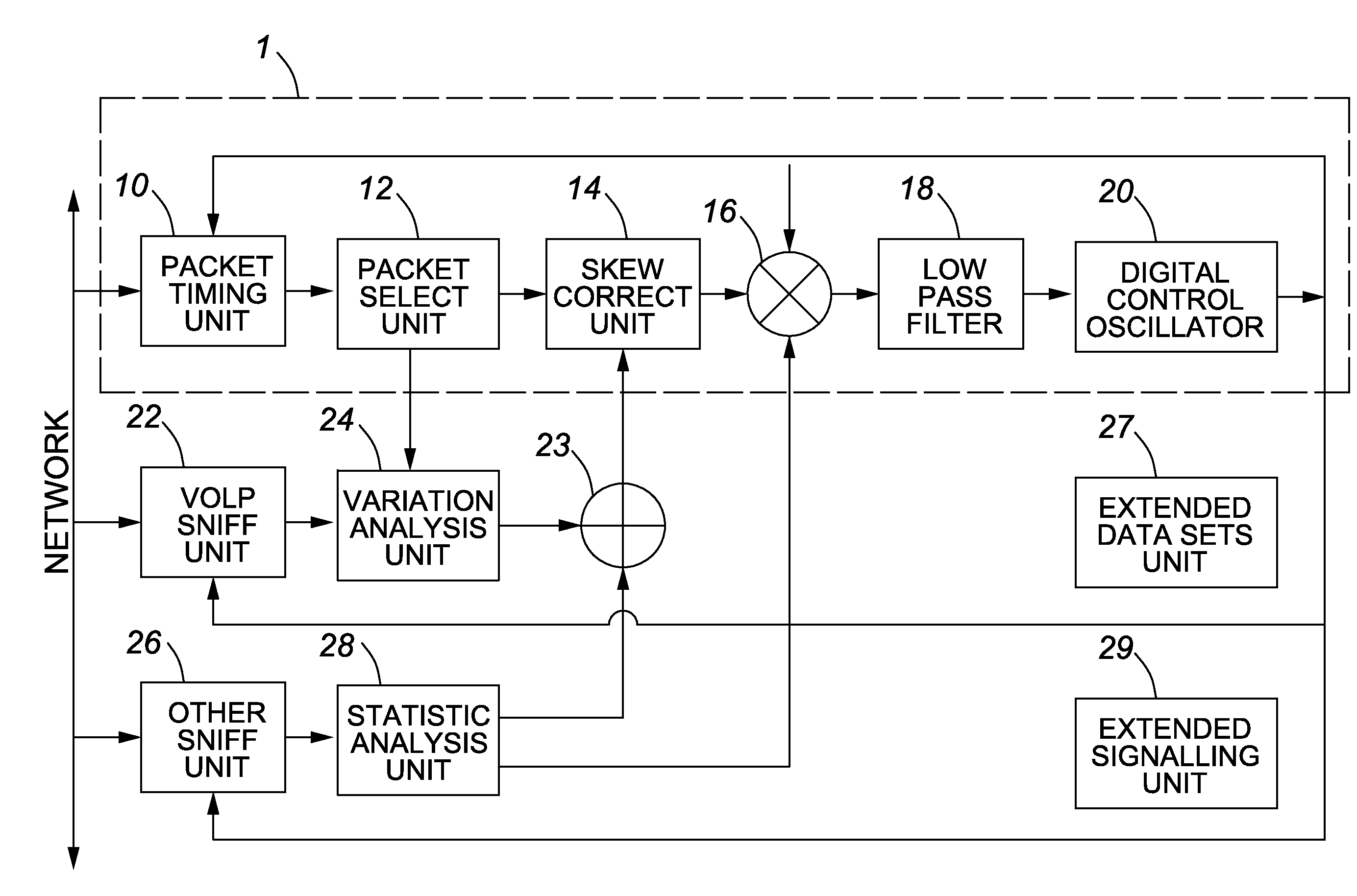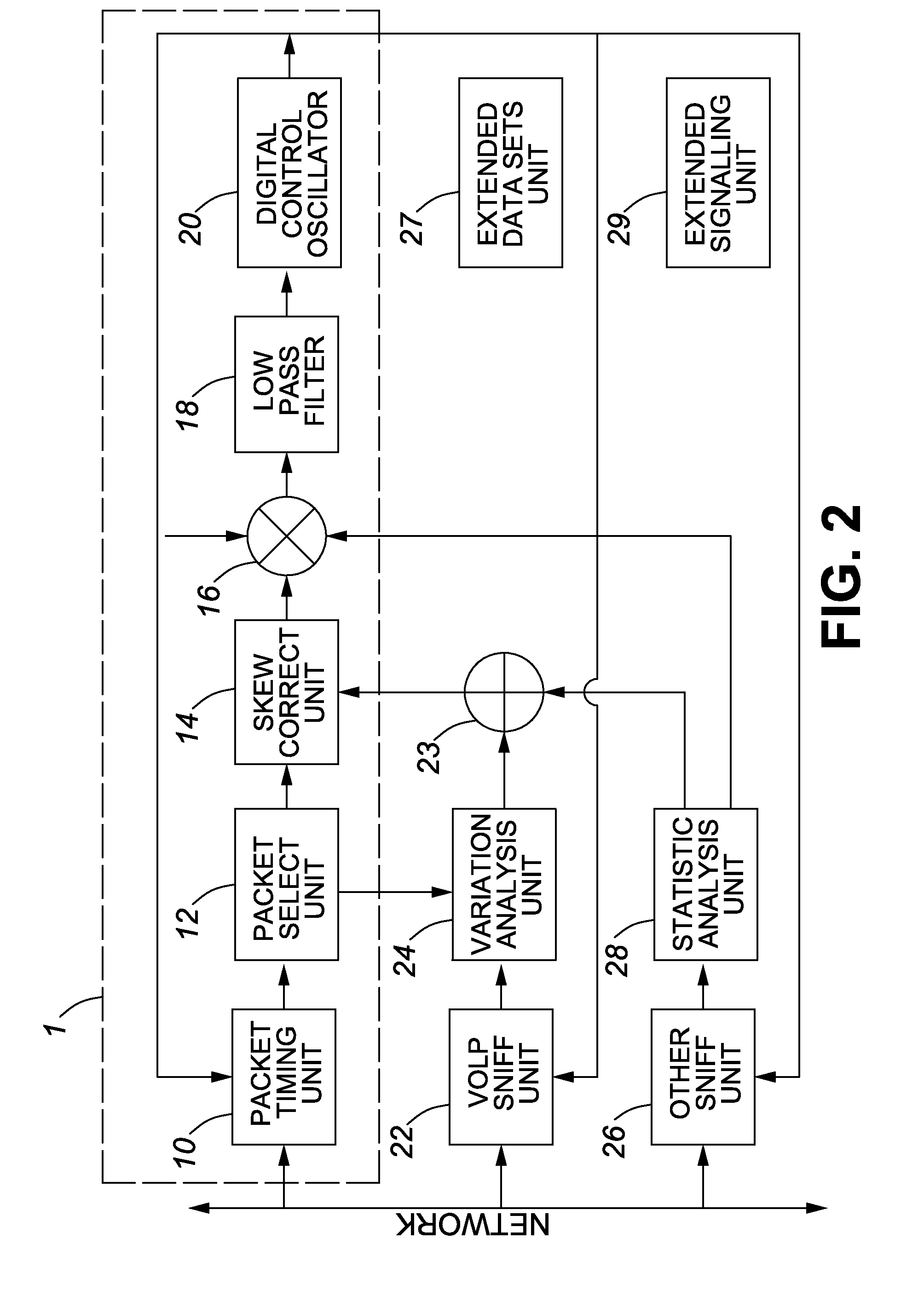Method of adjusting a local clock in asynchronous packet networks
a local clock and packet network technology, applied in the field of clock synchronization over packet networks, can solve the problems of skewed distribution and more processing intensiv
- Summary
- Abstract
- Description
- Claims
- Application Information
AI Technical Summary
Benefits of technology
Problems solved by technology
Method used
Image
Examples
Embodiment Construction
[0024]In FIG. 1 a remote master clock 8, which is normally assumed to be stationary, is synchronized to a primary reference source, such as a GPS signal, and periodically sends timing packets 9 over a network to the local clock generator in the form of a phase locked loop 1, which attempts to generate output pulses Rx synchronized to the master clock. The local clock generator may be mobile or stationary.
[0025]The timing packets 9 are time-stamped by the master clock 8 with their time of departure based on the time domain of the master clock. Typically, the master clock sends timing packets at the rate of one packet per second, although it would be desirable to reduce this to, say 1 timing packet every ten seconds, in order to reduce the bandwidth requirement.
[0026]However, the fewer timing packets that are sent, the more difficult it is to maintain synchronization.
[0027]FIG. 1 shows a phase locked loop 1 producing a local output clock Rx. The phase locked loop 1 comprises a packet ...
PUM
 Login to View More
Login to View More Abstract
Description
Claims
Application Information
 Login to View More
Login to View More - R&D
- Intellectual Property
- Life Sciences
- Materials
- Tech Scout
- Unparalleled Data Quality
- Higher Quality Content
- 60% Fewer Hallucinations
Browse by: Latest US Patents, China's latest patents, Technical Efficacy Thesaurus, Application Domain, Technology Topic, Popular Technical Reports.
© 2025 PatSnap. All rights reserved.Legal|Privacy policy|Modern Slavery Act Transparency Statement|Sitemap|About US| Contact US: help@patsnap.com



